PEMF for Plantar Fasciitis: The Ultimate Pain Solution

Hello and welcome to my article about using PEMF for plantar fasciitis.
Hi, I’m Marco Gentile, and I’ve spent the last decade helping people take charge of their health using natural, science-backed approaches.
Do you feel stabbing heel pain when you take your first steps in the morning?
That is the hallmark of plantar fasciitis.
If you have this common foot problem, Pulsed Electromagnetic Field (PEMF) therapy could be the answer for your tired feet.
If you’re reading this, you’re likely familiar with Pulsed Electromagnetic Field (PEMF) therapy. Beyond its use for plantar fasciitis, PEMF has demonstrated a range of benefits. It can promote better sleep, ease muscle and back pain, and reduce stress and anxiety.
Additionally, PEMF can aid with arthritis, bone healing, neuropathy, and osteoporosis treatment, while also supporting athletic recovery, making it a versatile therapy for various conditions. It’s also widely used for enhancing meditation, and even for skincare.
In this article, I’ll break down the science of PEMF therapy in a simple, easy-to-understand way and explain how it specifically benefits those struggling with plantar fasciitis.
I’ll also share my top recommendations for PEMF devices that deliver real results.
Most importantly, I’ll walk you through a practical, step-by-step weekly plan to help you seamlessly incorporate PEMF therapy into your routine, without adding stress to your day.
After years of refining this approach, I’ve designed it to be both effective and realistic, even for the busiest schedules.
If you’re ready to explore how gentle electromagnetic pulses can help reduce pain, improve circulation, and support the healing of your plantar fascia, let’s dive in!
🔬PEMF For Plantar Fasciitis: How Does It Work? The Scientific Research
Plantar fasciitis develops when the thick band of tissue connecting your heel to your toes becomes inflamed.
As a runner, I have been dealing with foot problems very often since I started increasing my weekly mileage. But the same can happen from being on your feet all day or wearing shoes that don’t support you.
The result? Pain that can make simply walking across your bedroom a challenging task.
According to Dr. Christopher Kent Bromley, DPM, FACFAS, Adjunct Professor at Kent State University College of Podiatric Medicine, “PEMF therapy is an effective addition to the conservative treatment of plantar fasciitis.”
A multicenter, prospective, randomized, double-blind, placebo-controlled study from 2023 investigated the effects of a wearable PEMF device used for seven consecutive nights in 70 patients with calcaneal spurs (a condition often associated with plantar fasciitis).
The study found that:
- The active treatment group (42 patients) showed significant decreases in morning pain between day 1 and day 7 compared to the placebo group (28 patients)
- Pain reduction became significant by day 4 and remained significant through day 7
- Evening pain decreased by 30% in the treatment group versus 19% in the placebo group, though this difference did not reach statistical significance
The results demonstrated that patients who received PEMF therapy experienced significantly better outcomes than those who didn’t. These improvements were maintained at three-month follow-up assessments, suggesting lasting therapeutic benefits.
And that’s not all.
When the electromagnetic pulses reach your inflamed plantar fascia, they interact with the cells and tissues in a targeted, therapeutic way.
Let’s explore the mechanisms through which PEMF can produce a range of beneficial effects on your plantar fascia.
🩸Increasing Blood Flow

A 2015 randomized controlled trial, published in Advanced Skin & Wound Care, found that PEMF increased capillary blood velocity by 28% and diameter by 14%, increasing microcirculation.
A 2024 article in Frontiers in Sports and Active Living found that PEMF may boost blood flow and oxygen levels by increasing vessel diameter and stimulating nitric oxide production, leading to vasodilation.
The increased flow may help the plantar fascia by bringing a bigger amount of healing nutrients to the area.
🌿 Reducing Inflammation and Chronic Pain
A 2014 study published in the Journal of Inflammation Research found that PEMF therapy can lower inflammatory markers like C-reactive protein (CRP), which often rises in those with chronic pain.
A 2019 research published in Bioelectricity suggests that PEMF therapy helps to calm inflammation by reducing the production of pro-inflammatory cytokines (the chemicals that trigger swelling and pain).
Several other studies have shown the ability of PEMF to reduce chronic pain. In particular, PEMF therapy can help with morning foot pain, one of the most troublesome symptoms of plantar fasciitis.
Supporting Tendon Regeneration
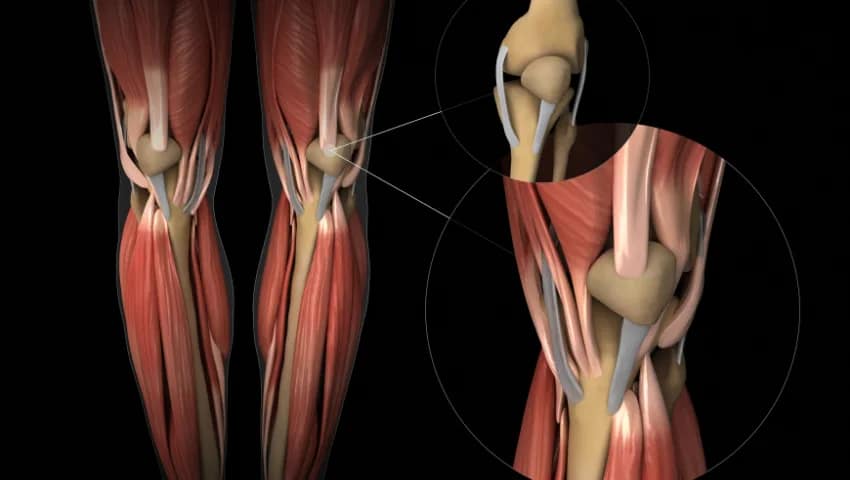
A 2015 research study published in Frontiers in Aging Neuroscience found that PEMF therapy may help treat tendinopathy and support tendon healing by increasing the production of a key healing protein called TGF-β.
Since plantar fasciitis involves degenerative changes in the plantar fascia (a specialized tendon-like structure), these mechanisms could be relevant to its treatment.
A Key Study on the Effects of PRFE for Plantar Fasciitis
In a 2012 study published in the Journal of Foot and Ankle Surgery, researchers investigated the effectiveness of Pulsed Radiofrequency Electromagnetic Field (PRFE) therapy in treating plantar fasciitis.
Seventy participants with this condition were randomly assigned to either an active PRFE device group or a placebo group. They were instructed to wear the device overnight and record their pain levels each morning and evening over a week.
- Pain Reduction: The PRFE group reported significantly less pain during their first steps in the morning compared to the control group.
- Improved Function: Participants using PRFE showed better overall foot function.
While PRFE and PEMF therapies are closely related in the sense that both use electromagnetic energy, they differ in their technical specifications. PRFE uses higher radio frequencies, whereas PEMF operates at lower frequencies.
Still, they share overlapping therapeutic effects, and it’s reasonable to consider that PEMF therapy could offer similar benefits for individuals suffering from plantar fasciitis.
PEMF for Plantar Fasciitis – Summary Infographic
PEMF for Plantar Fasciitis: The Bottom Line
For people who’ve tried other treatments for plantar fasciitis without success, PEMF could offer a new path to relief. It may work well alongside stretching and traditional treatments to create a complete healing approach.
The best part? No downtime! After your session, you can immediately return to your normal activities—potentially with less pain and more spring in your step.
At this point, you might be wondering…where do I start? First, you will need a PEMF device. So let’s get to it in the next section!
Choosing the Right PEMF Device for Plantar Fasciitis
With so many PEMF options hitting the market, how do you know which is right for your plantar fascia? In the next section, I’ll help you find the right PEMF device to treat your plantar fasciitis.
1. PEMF Mats
PEMF mats offer many wellness benefits, including relief for your feet. So if plantar fasciitis isn’t your only concern, investing in a mat makes sense! However, if you’re specifically looking to treat plantar fasciitis, a more affordable and targeted option might be a better choice.
There are dozens of PEMF mats out there, but not all are worth it. My article on the Top 26 PEMF Mats of 2025 breaks it all down. Here are the three best performers from that list:
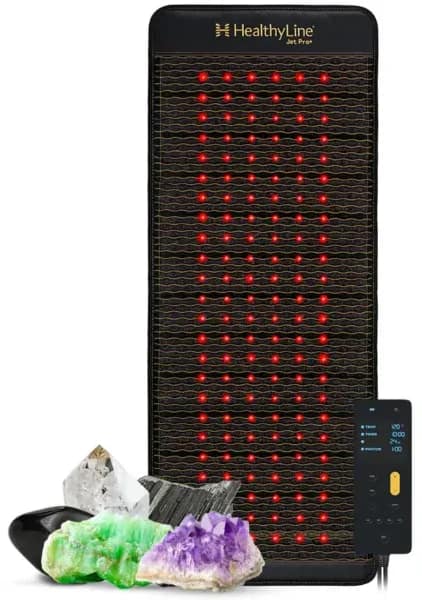
HealthyLine JET

OMI PEMF Beyond

Therasage TheraPro
2. PEMF Pads
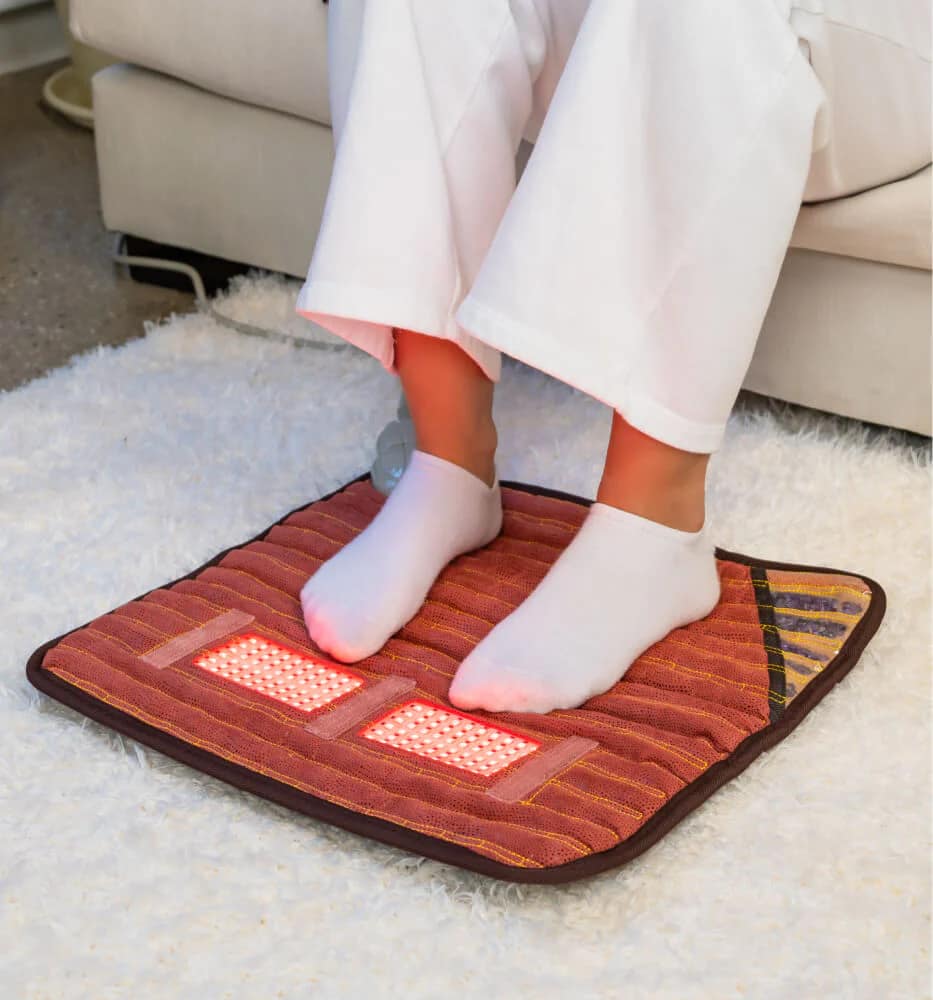
PEMF pads are perfect for focusing therapy on a specific area of your body, making them ideal for treating plantar fasciitis with PEMF therapy.
These smaller devices are more affordable than full-size mats, easy to carry around in a bag, and many even come with battery power, so you can get treatment on the go, wherever you are.
I personally recommend them for treating plantar fasciitis because you can simply place your feet on them, allowing the benefits to target exactly where you need them—the back of your feet.
Are you curious if a PEMF pad is the right choice for you? Check out my article on the best PEMF pads, where I’ve done the research to help you find the perfect one to suit your unique needs and healing goals.
Here’s my personal ranking of the top PEMF pads for specifically treating plantar fasciitis:
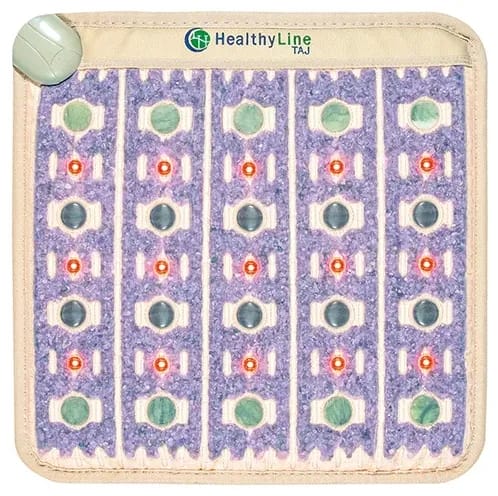
HealthyLine TAJ Pad

OmniPEMF NeoRhythm

HealthyLine TAO Matrix
3. Portable PEMF Wearables
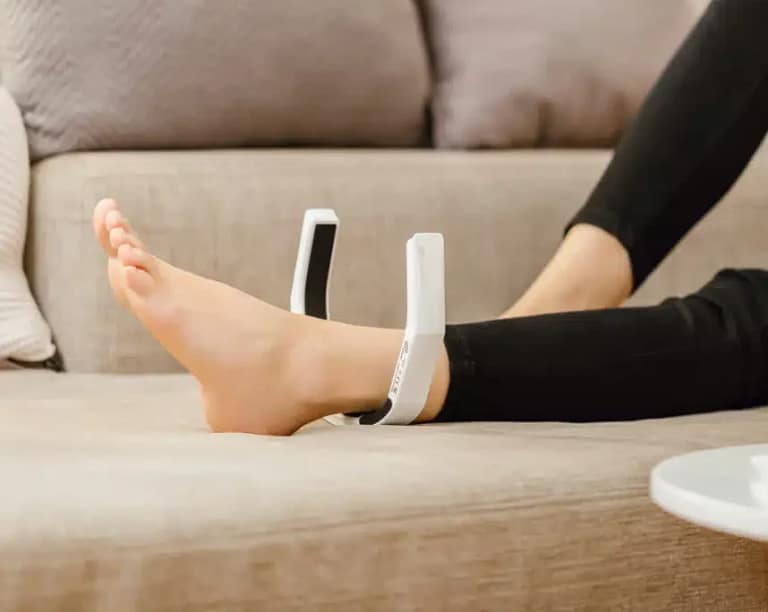
PEMF wearables are a great way to target healing right where you need it most. You can attach them to specific areas, like your feet, so the treatment goes straight to the problem spots.
Compact, lightweight, and battery-powered, these devices are designed for maximum convenience, allowing you to continue with your daily activities while enjoying the benefits of therapy. Whether you’re at home, at work, or on the go, you can experience relief without interrupting your routine.
Want to dive deeper into the world of PEMF Wearables? Check my buying guide on the best portable PEMF devices and wearables. I’m sure you’ll find the device that’s best for you!
Here is my top 3 list of PEMF wearables you should consider to treat your plantar fasciitis:

OMI PEMF Ring
Great device that is large enough for you to put both feet inside.

OmniPEMF NeoRhythm
Huge value for money, but may be too small to use on both feet at once.

Haelo
Best tech. Very expensive. You can rest your feet on it, and it will do the magic.
📅 PEMF for Plantar Fasciitis: My Weekly Schedule (Tried and Tested)
If you want to use PEMF therapy to support your plantar fasciitis treatment, this simple yet effective weekly plan takes the guesswork out of your routine. Drawing from clinical research and scientific studies on PEMF for plantar fasciitis, I’ve designed a well-rounded approach that prioritizes both safety and effectiveness.
Are you new to PEMF? Let me quickly define frequency and intensity:
-
Frequency, measured in Hertz (Hz), refers to the number of electromagnetic pulses delivered per second by a PEMF device. In simple terms, it determines how fast the pulses occur.
-
Intensity represents the strength of the electromagnetic field emitted by the PEMF device. Most devices use Gauss (G) and MicroTesla (µT) in their user manual and controllers or phone apps. So I have included both in the table.
This plan follows established protocols, ensuring you get the maximum benefits while maintaining a structured and easy-to-follow schedule. Whether you’re new to PEMF or looking to refine your current regimen, this guide will help you stay consistent and confident in your healing journey.
| Day | Sessions | Frequency | Intensity | Duration | Notes |
|---|---|---|---|---|---|
| Monday | 1 (Morning) | 10-15 Hz | 50 µT 0.5 G | 20 Min | Gentle stretching before and after the session. |
| Tuesday | Rest | – | – | – | Focus on hydration and anti-inflammatory foods. |
| Wednesday | 1 (Evening) | 10-15 Hz | 50 µT 0.5 G | 20 Min | Do calf stretches and foot rolling exercises post-session. |
| Thursday | Rest | – | – | – | Avoid prolonged standing; Wear supportive footwear. |
| Friday | 1 (Morning) | 10-15 Hz | 50 µT 0.5 G | 20 Min | Combine with light massage of the plantar fascia using a foam roller or ball. |
| Saturday | Rest | – | – | – | Engage in low-impact activities like swimming or cycling. |
| Sunday | 1 (Evening) | 10-15 Hz | 50 µT 0.5 G | 20 Min | End the week with a warm foot soak to relax muscles and enhance circulation. |
Additional Information
-
Duration: Follow this plan for a total of 12 weeks, as studies suggest significant improvements in pain and functionality within this timeframe.
-
Maintenance: After completing the initial cycle, reduce therapy to twice weekly for maintenance.
-
Regularly assess pain levels using a Visual Analog Scale (VAS) or similar tool.
-
Always consult a doctor if pain or discomfort arises during sessions.
Guidelines for Flexible PEMF Therapy Integration
Not a fan of rigid schedules? No worries! Here’s a more flexible approach to integrating PEMF therapy into your routine while still achieving excellent results.
You can tailor it to fit your lifestyle—whether you enjoy a morning session to energize your day or a relaxing treatment in the evening to unwind. The key is finding what feels right for you!
- Frequency & Intensity:
- Use PEMF devices with frequencies between 10 and 15 Hz and intensities of 50 µT / 0.5 G.
- Sessions should last approximately 20 minutes.
- Session Timing:
- Morning sessions may help reduce stiffness experienced upon waking.
- Evening sessions can alleviate pain accumulated throughout the day.
- Rest Days:
- Include at least three rest days per week to allow natural healing processes.
- Complementary Practices:
- Perform gentle stretching exercises targeting the calf muscles and plantar fascia.
- Incorporate anti-inflammatory foods like ginger, turmeric, and leafy greens into your diet.
- Maintain hydration to support tissue repair.
- Footwear & Support:
- Wear shoes with proper arch support and cushioning during therapy cycles.
- Consistency:
- Aim for at least three sessions per week for optimal results but adjust based on personal schedules.
Whether you follow this plan as-is or adapt it to suit your lifestyle, you can maximize the benefits of PEMF therapy for plantar fasciitis management.
This method is backed by the latest research, ensuring a safe and effective approach. With a solid scientific foundation, you can feel confident in your treatment while experiencing real, tangible results.
FAQs
PEMF therapy is generally safe for most individuals, but there are some important precautions to keep in mind. People with pacemakers, insulin pumps, or other implanted medical devices, as well as those who are pregnant, should avoid using PEMF due to potential risks.
For a deeper dive into safety considerations, contraindications, and possible side effects, explore our comprehensive guide.
Yes, your dog can absolutely use PEMF therapy! PEMF for dogs is commonly used to help with pain relief, inflammation, arthritis, injury recovery, and even post-surgery healing. Just make sure to use a pet-safe PEMF device and consult your vet for the best settings and schedule for your dog’s specific needs.
Scientific Evidence

ABOUT THE AUTHOR
Marco Gentile
Marco Gentile (CHC, CMT, CTP, CETS) is a seasoned wellness professional with over 10 years of experience helping clients achieve optimal health and longevity. Currently, he works at the Burke Williams Spa – Health, Wellness & Fitness Center in Los Angeles, where he continues to inspire and support individuals on their wellness journeys.







